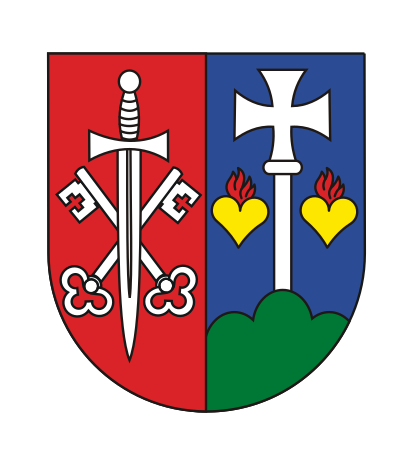The pipe organ is the oldest keyboard musical instrument, with its origins dating back to the 3rd century BC. At the same time, it is the instrument that has undergone the most dynamic development throughout history. During the Middle Ages, it became widespread in European church music. Thanks to its distinctive sound—exceptionally suited for accompanying choral singing and instrumental parts of liturgical rites—it secured a firm place in musical tradition and liturgical practice. Since ancient times, it has been known as the “king of musical instruments,” and organ music continues to captivate and enrich listeners to this day. The organ can gently soothe or burst into jubilation, mourn with the sorrowful, or resound in full majesty to the eternal glory of God. It is no wonder that the Second Vatican Council praised this instrument: “The pipe organ is to be held in high esteem in the Latin Church, for it is the traditional musical instrument which adds a wonderful splendor to the Church’s ceremonies and powerfully lifts up the mind to God and to heavenly things.” (Constitution Sacrosanctum Concilium, 120)
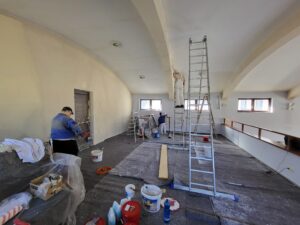
From the very first architectural plans, the construction of a pipe organ was envisioned for the Monastic Church of the Transfiguration of the Lord in Sampor. Due to limited resources, the monastic community decided to complete only the essential furnishings of the church in the first phase, so that the monastery could soon welcome monks and guests and provide space primarily for choral liturgical prayer. After the completion of the first phase of the monastery in 2010, the community began contacting organ builders to “map the terrain” and gain an understanding of the financial demands of such a project. The goal was to build an instrument that would primarily serve liturgical needs, but also enhance the cultural life of the monastery through concerts of sacred and classical music. The complexity and cost of building a new organ led to the postponement of the project in favor of completing other important parts of the monastery.
2022-2023
After the completion of the new cloister section of the monastery, attention returned to the enhancement of the monastic church and the missing organ. As part of the selection process for an organ builder, the monks approached the Organárske dielne Žilina (Žilina Organ Workshops) of brothers Roman and Marián Muška, requesting a proposal and cost estimate. The final project, which the monastic community ultimately chose, was developed through mutual dialogue between December 2022 and May 2023. Several versions of the organ’s design and visual appearance were considered. The monastery also invited other experts to collaborate, with concert organist and professor Zuzana Ferjenčíková (Rotterdam) making a significant contribution to the final concept.



2023-2024
In late summer 2023, work on the new organ began at the organ workshop and continued until January 2025. In addition to the team from Organárske dielne Žilina (Martin Talapka, Jozef Šuška, Miroslav Šťukovský, and others), several subcontractors contributed to the project, including Michal Kenis (metal pipe production) and Otto Heuss GmbH (electrical components and part of the console). Roman Muška was responsible for the project documentation and technical oversight, while Marián Muška supervised the musical and tonal aspects.


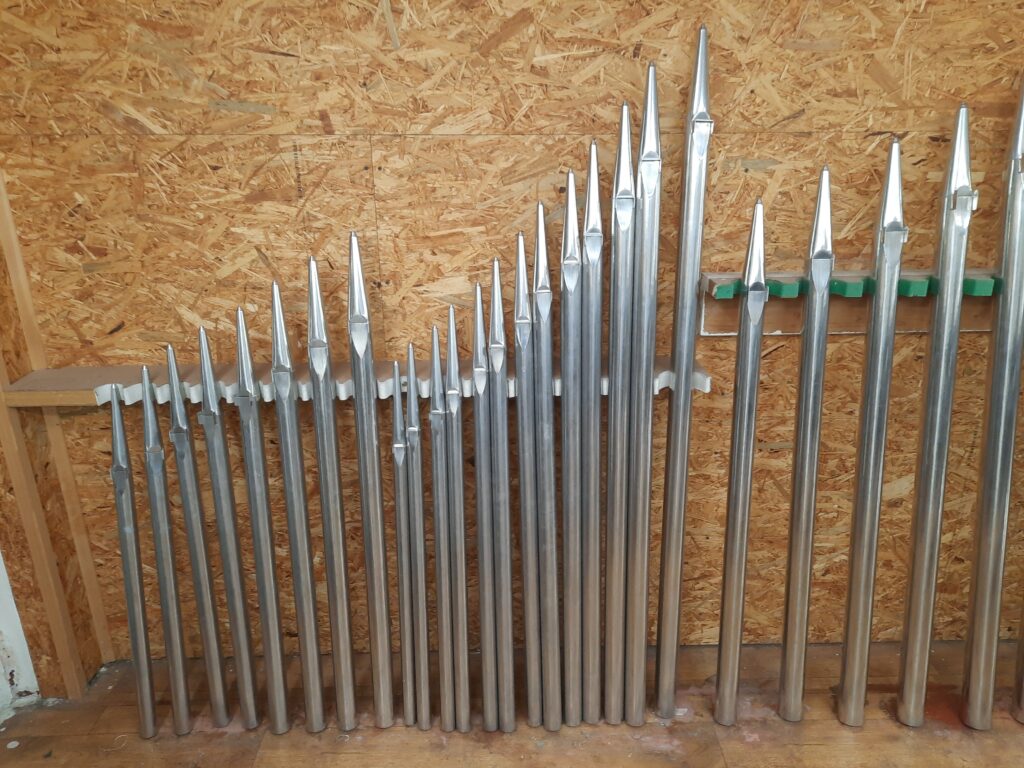
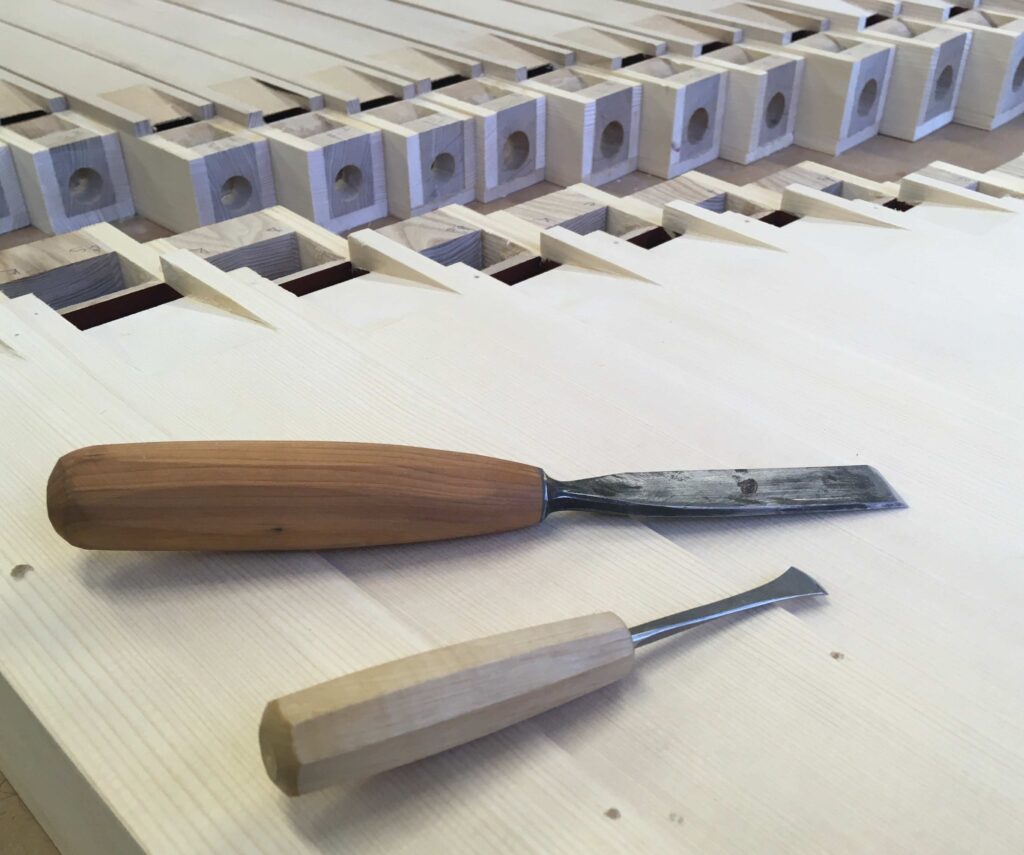
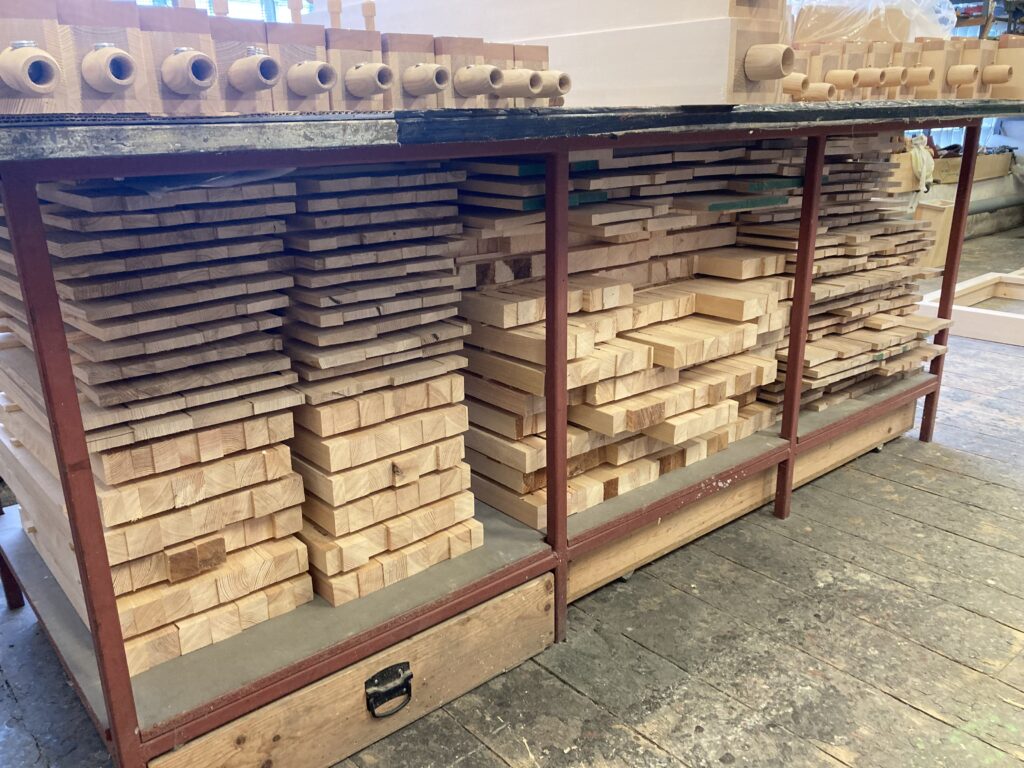

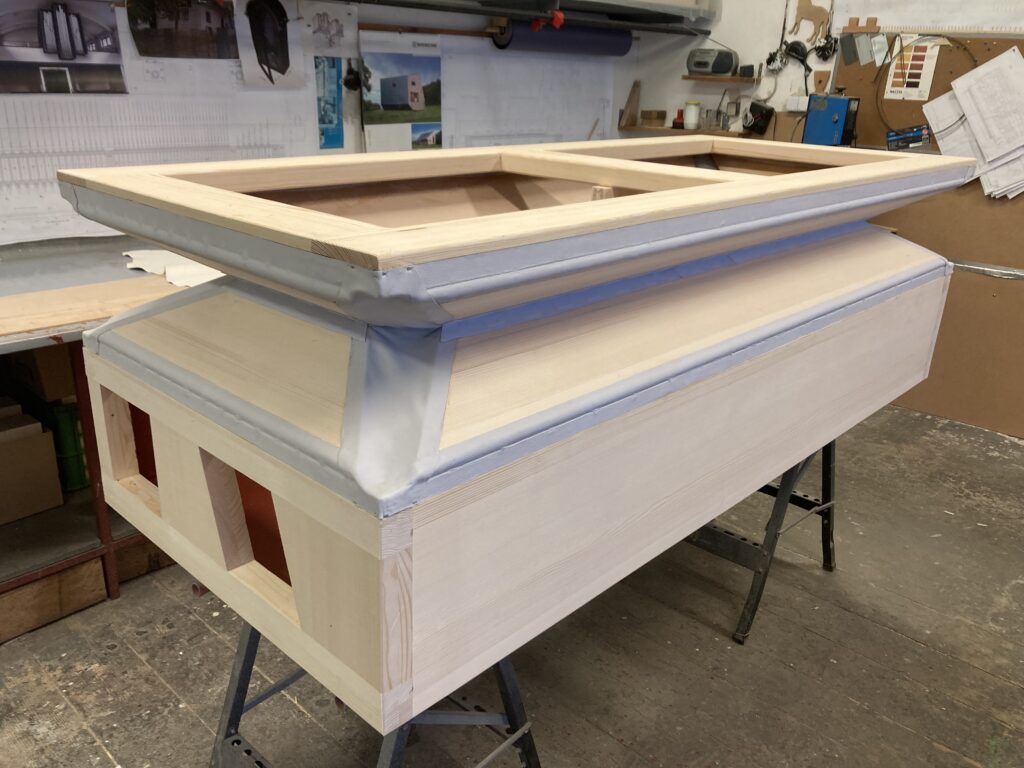
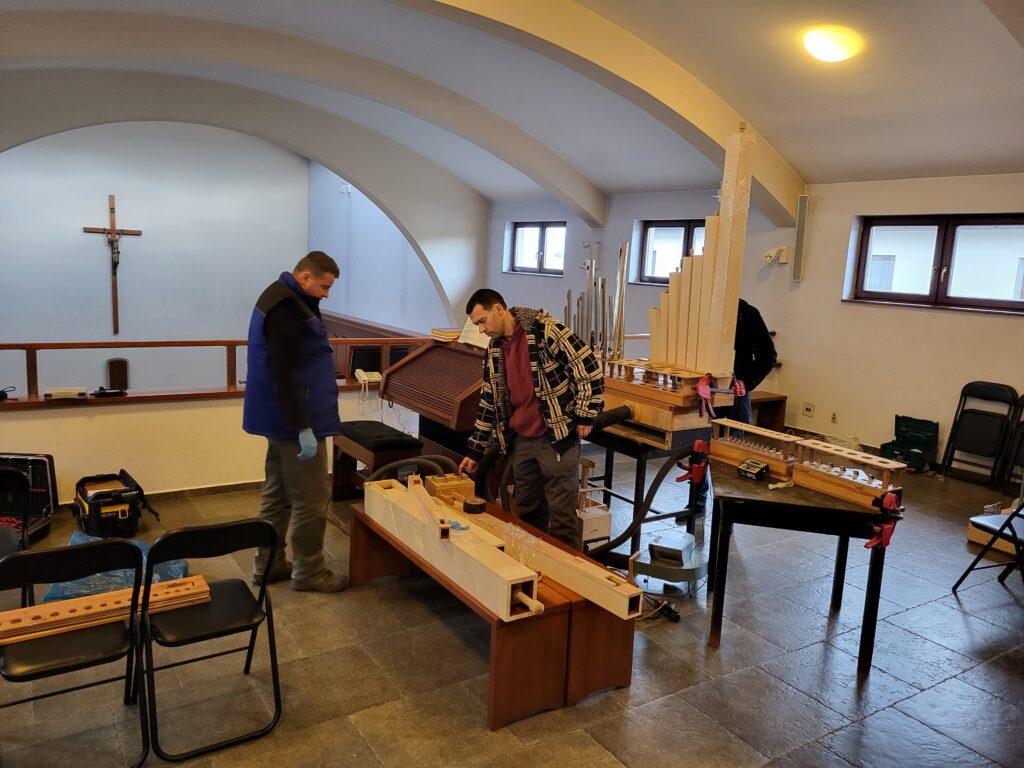
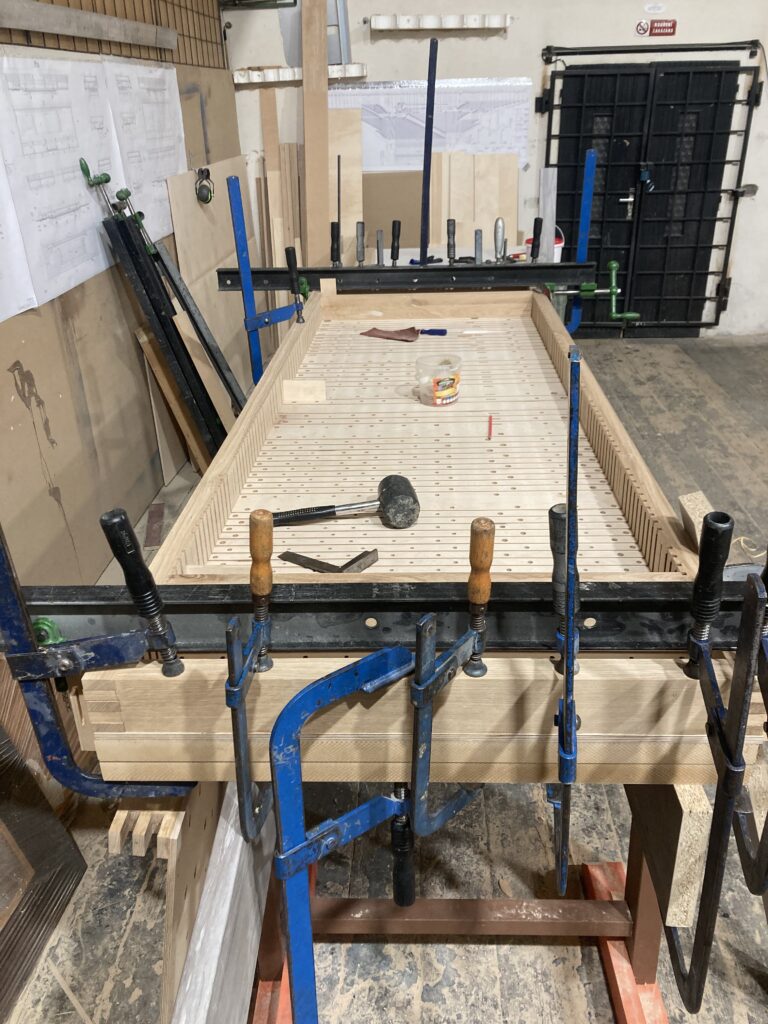
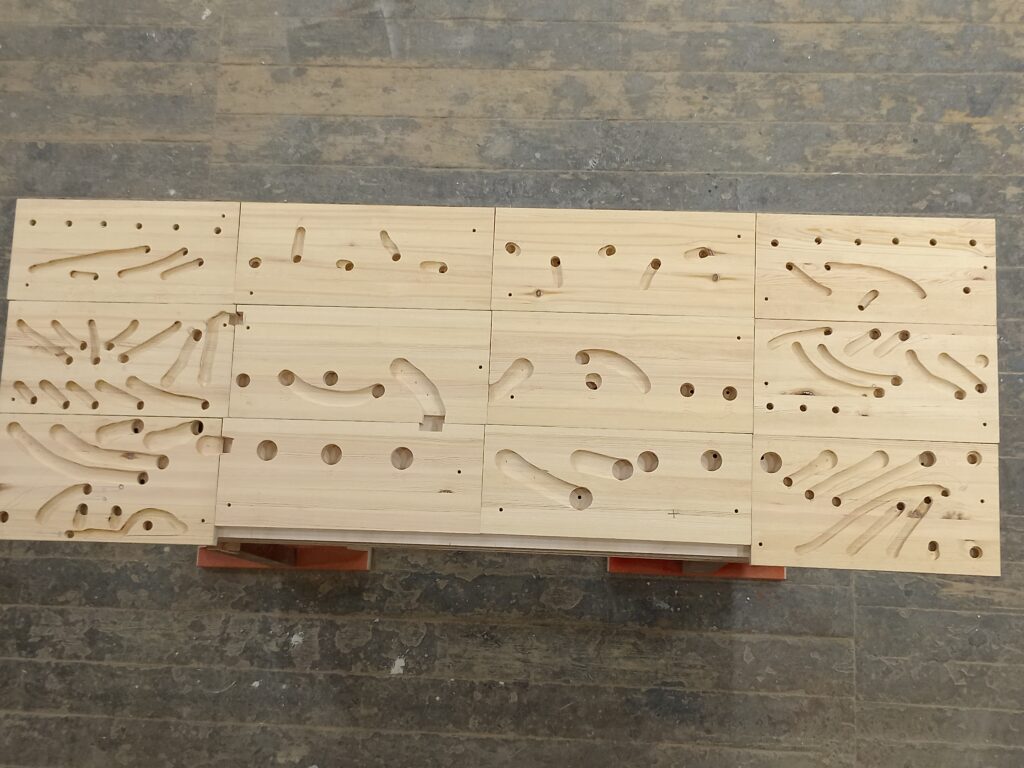
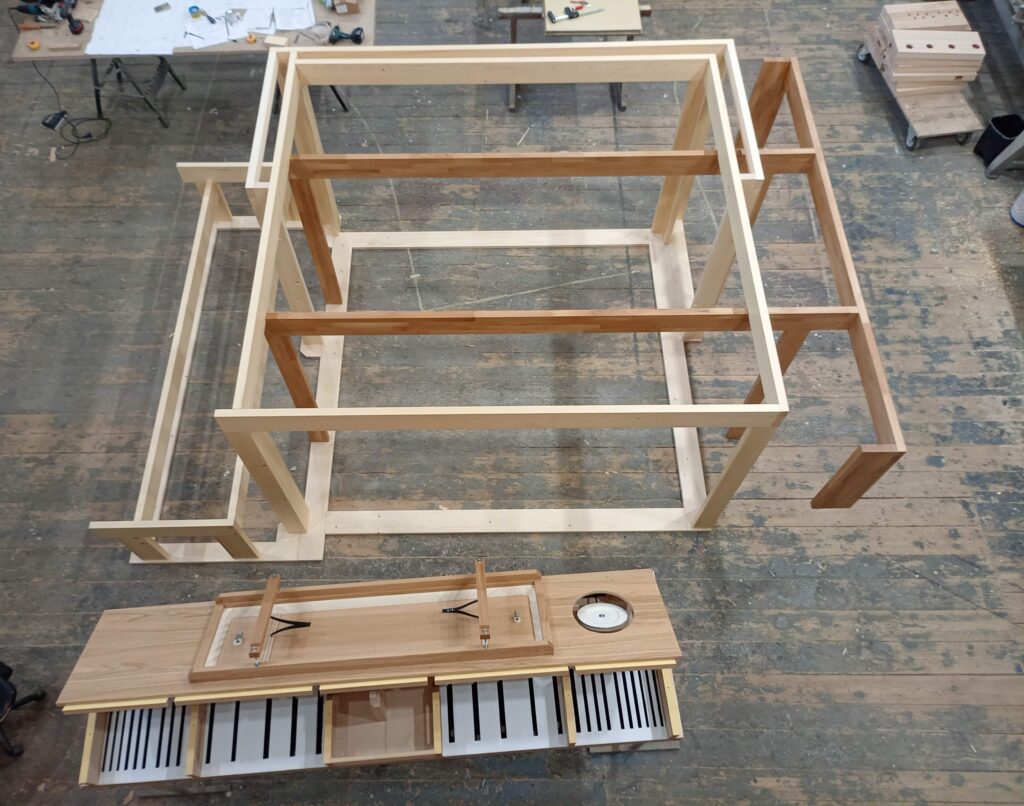
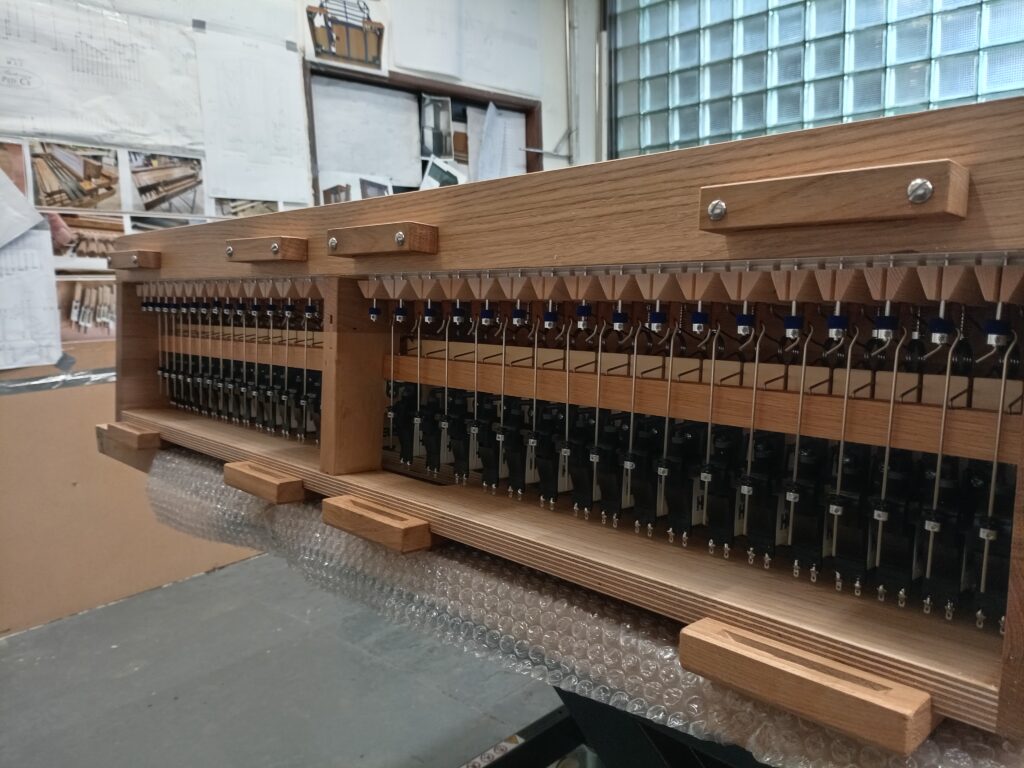
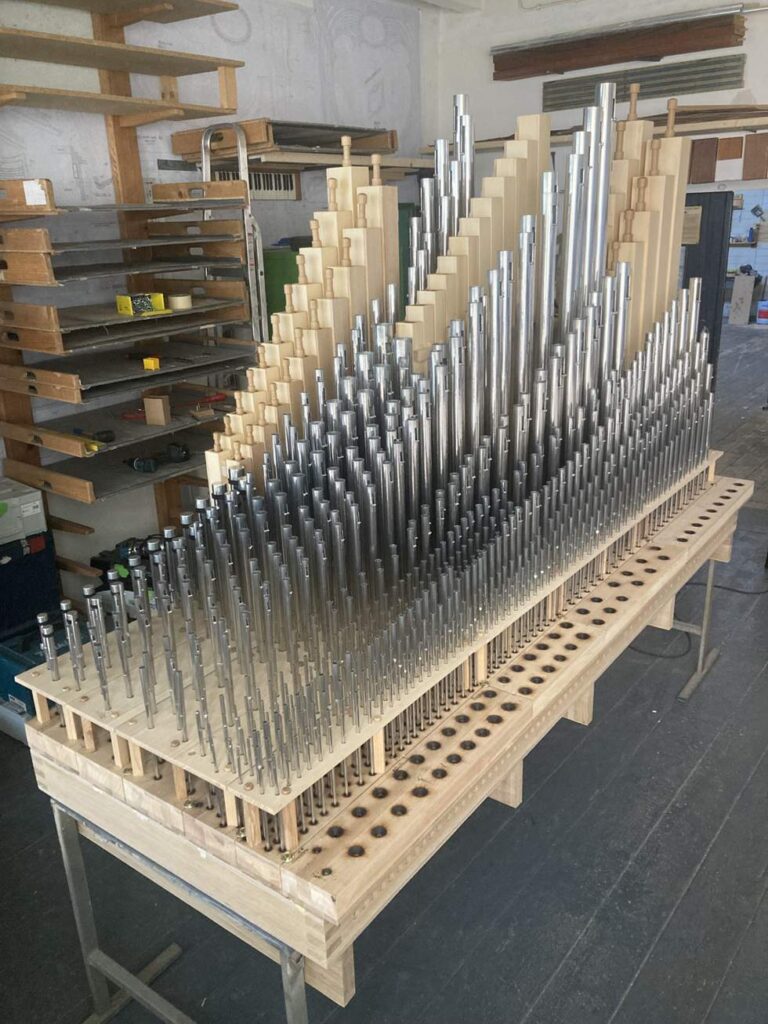
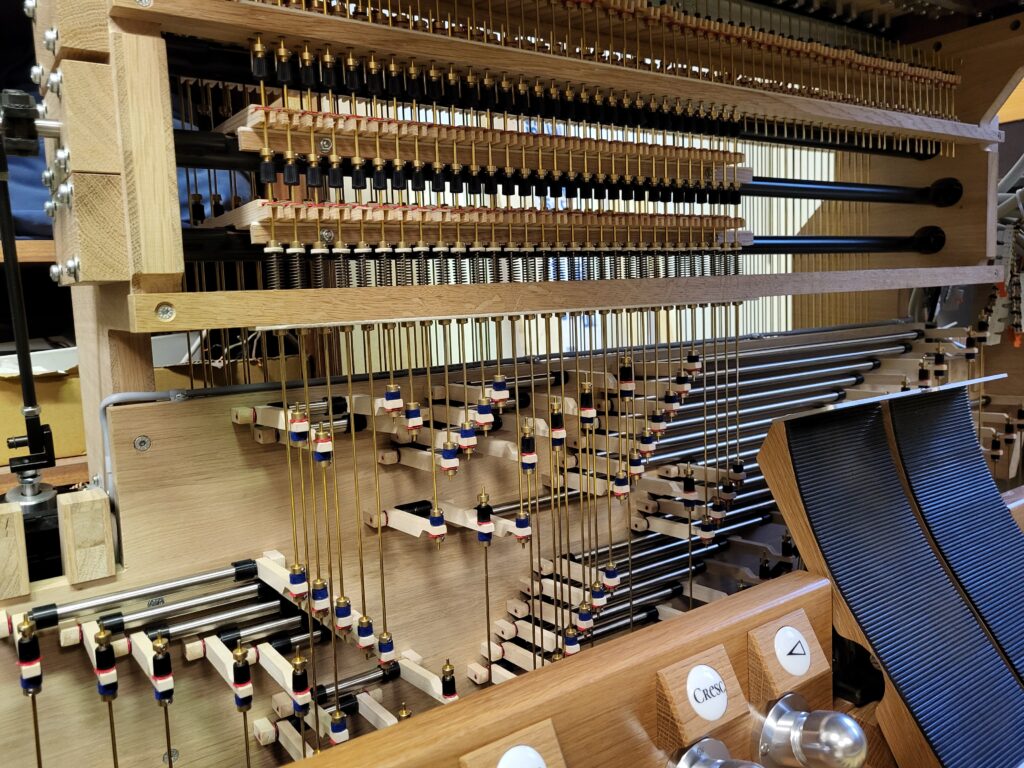

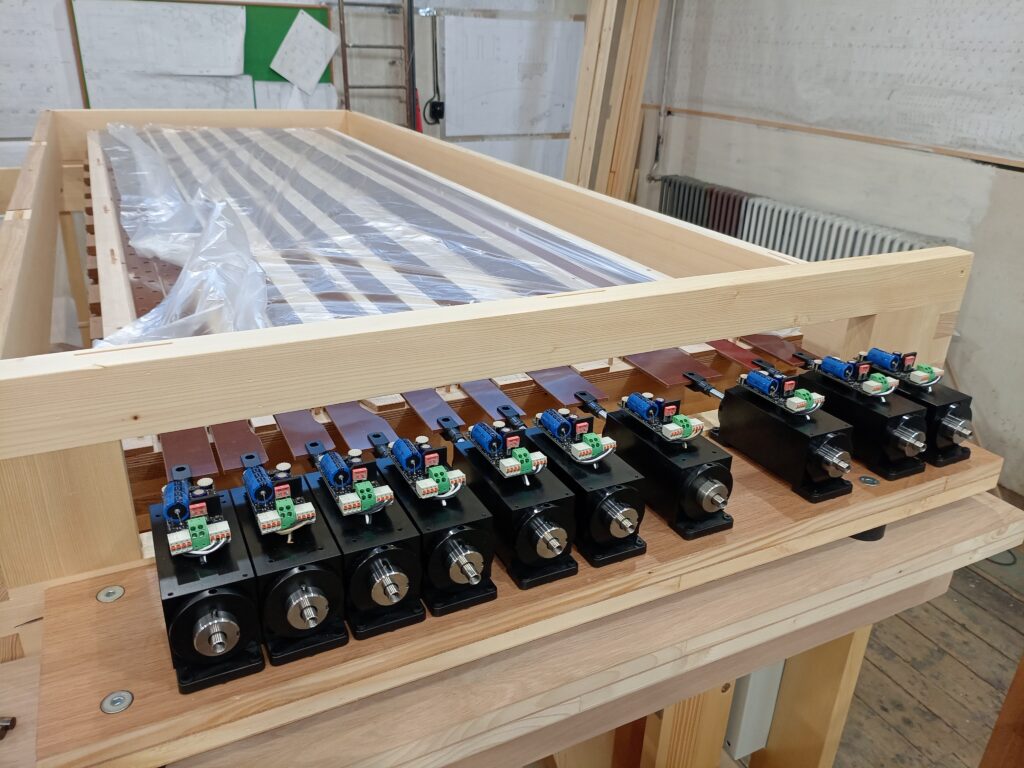
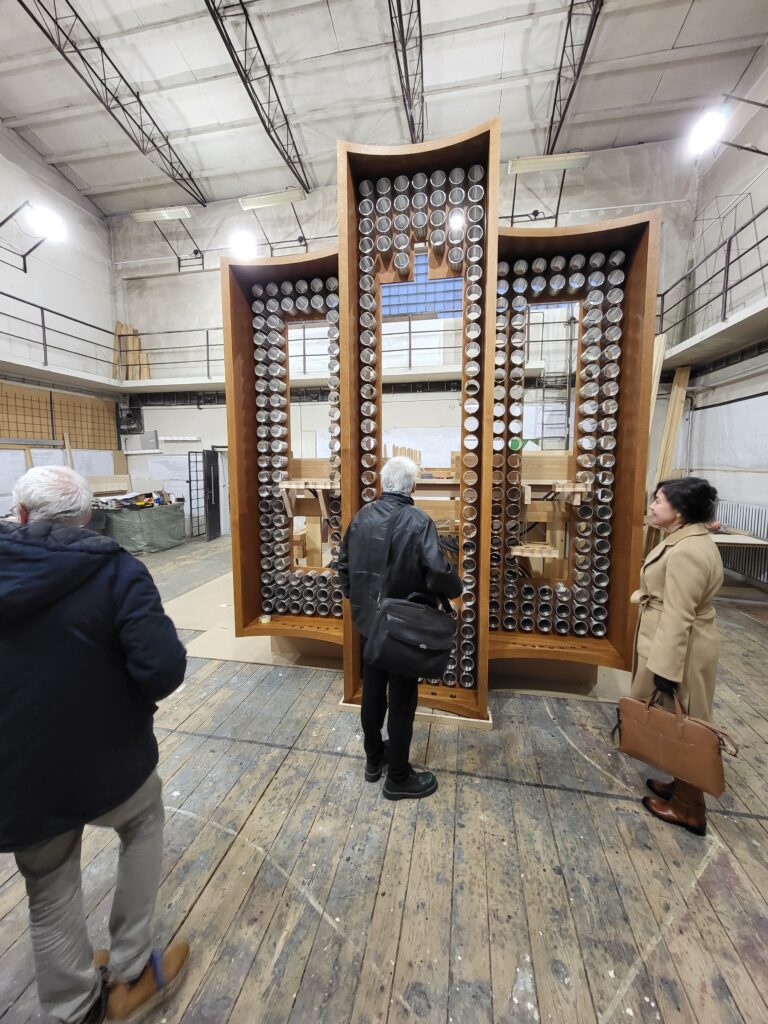
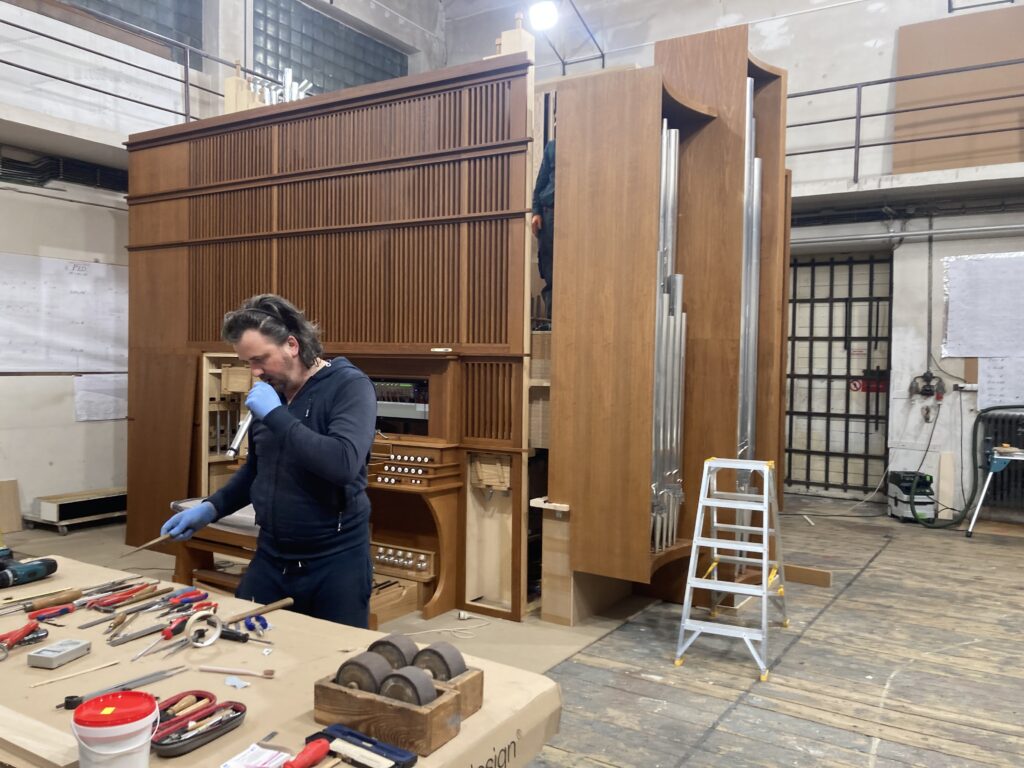
A key milestone was the tonal test conducted in the monastic church on January 23, 2024, using a sample of completed pipes. On this day, renowned Czech voicer Tomáš Fafílek joined the project, taking on the crucial task of breathing life into the raw instrument—giving the physically completed organ its final sound.
2025
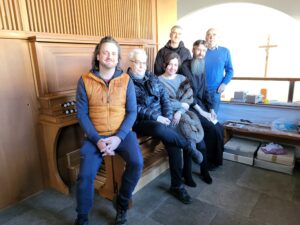
The work at the organ workshop concluded with a public presentation of the instrument on January 31, 2025, held in the assembly hall, where the new organ was heard for the first time by the public and media representatives. A short presentation concert was performed by Marián Muška. In February 2025, the organ was fully dismantled, transported, and reassembled in the organ loft of the Monastic Church of the Transfiguration of the Lord in Sampor. Final voicing work followed in March 2025, after expert consultation and acoustic testing in the church space.
The solemn blessing and inauguration of the organ took place on Saturday, March 29, 2025. The pontifical Mass with the rite of organ blessing was celebrated by Mgr. Marek Forgáč, Auxiliary Bishop of Košice and Chairman of the Music Subcommission of the Liturgical Commission of the Slovak Bishops’ Conference. The first tones of the organ were heard in an improvisation on the texts of the organ awakening rite, performed by Zuzana Ferjenčíková. The liturgy was musically accompanied by the Chorus Salvatoris from Bratislava, with organists Zuzana Ferjenčíková, Marián Muška, and Marek Cepko. After the liturgy, a short inaugural organ concert was held, featuring performances by Marián Gregor (Bach, Nibelle), Michal Mária Kukuča OSB (Fleury), and Zuzana Ferjenčíková (Liszt/Guillou).
